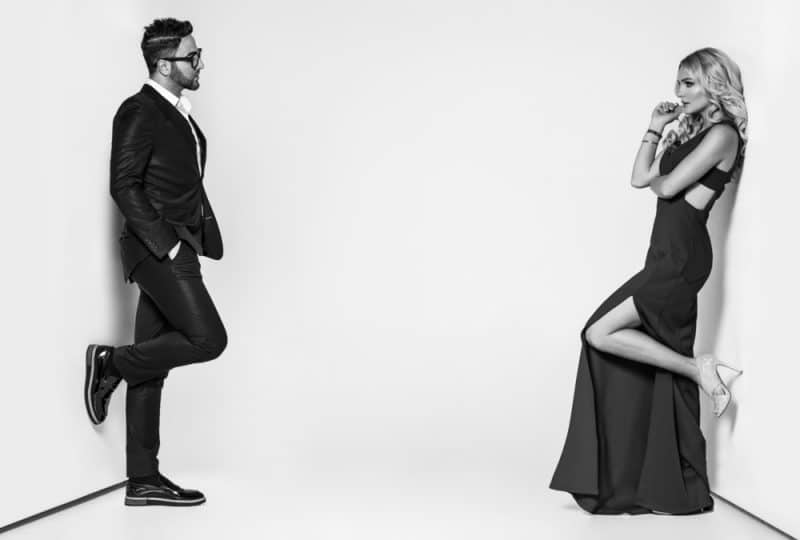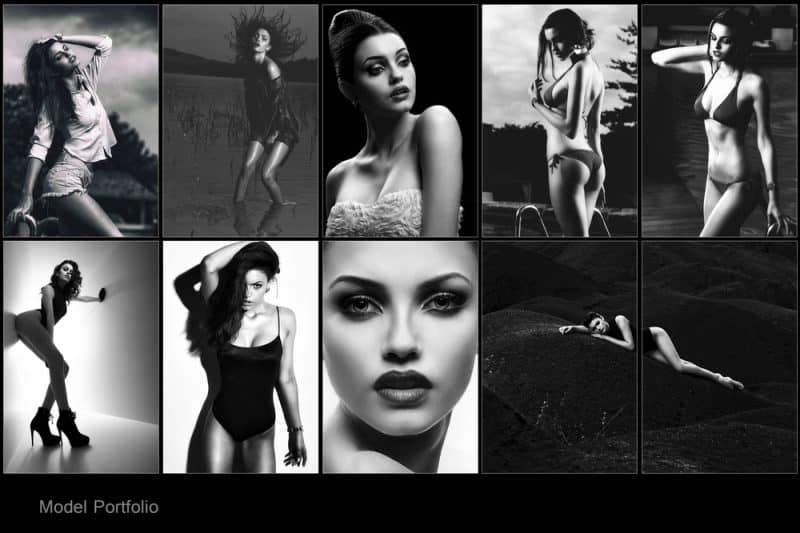Modelling Tips: 6 Things You Must Know If You Want To Become A Successful Model
Are people always telling you that you have what it takes to become a model?
Here at UK Models we always provide the best modelling tips for aspiring models. There’s always someone out there who wants to find fame and fortune in front of a camera lens – using their natural confidence and beauty to create stunning images, or even to help facilitate sales. However, despite what the media and movies might tell us – becoming a successful model isn’t just about being tall and beautiful. The world is filled with attractive people, and if you want to make it in the world of modelling, then you’re going to need the drive, talent, uniqueness, and knowledge to back up those good looks.
Do you have the commitment, determination and potential to become a successful model? Register today, to find out if you have what it takes.
6 Modelling Tips for Beginners
- Discover your modelling market.
- Research different types of modelling.
- Design a knock-out portfolio.
- Consider classes to improve your skills.
- Approach modelling agencies with the right attitude.
- Be prepared for model life.

We know that modelling can be a highly lucrative and glamorous career, but it also requires a lot of hard work if you want to reach the top in one piece. Following, we will cover some useful modelling tips for beginners, plus some key things to keep in mind on the road to becoming a model.
If you want to have the best possible chance of making your professional dreams come true, this is the modelling guide for you.
1. Discover Your Modelling Market
If you want to be a model, then the first step is determining the kind of model you can be. In this particular industry, there are various markets to choose from, and selecting the one that best fits with your natural skills and attributes will have a significant impact on your opportunities for success. In general, the primary markets for modelling are in areas like:
- Plus-size: Perfect for curvaceous individuals.
- Runway: The majority of men on a catwalk are between 5’11” and 6’2″. Women are often at least 5’8″ and small-breasted.
- Commercial: Advertising and editorial, commercial models can come in many shapes and sizes depending on the industry in question, but a beautiful face and good personality are often essentials.
- Underwear, glamour, or swimsuit models: Normally suited to women with a curvaceous bust and smaller hips, and men with slim waists and broad shoulders.
- Alternative modelling: For models that don’t conform to typical “industry standards” in height and weight.

Though it’s true that anyone with a unique look can make it as a model, it’s important to think carefully about your natural talents and attributes. Being realistic about your chances of success in different areas of the modelling business will improve your ability to obtain a regular stream of work.
Sometimes, honesty in the path to becoming a model means looking in the mirror with a friend or agent and developing an in-depth assessment of your strengths and weaknesses. This should also help you when it comes to building a thick skin against criticisms – something that all models must have.
2. Research Different Types of Modelling
There’s much more to breaking into the modelling agency than snapping a few photographs and placing them in front of the right agency. Examining your strengths and weaknesses, and coming to a decision about the kind of model you might want to be might also mean considering the different types of modelling careers that are available for you. After all, there are models across the world that never set foot on a catwalk, or appear in a glossy magazine. If you don’t think that those mediums are right for your particular skillset or look, then you can examine other types of modelling.
Remember, many organisations use models for the promotion of specific products or special events. Usually, there are fewer restrictions on body-type and a greater emphasis on personality within these jobs.
Some of the types of modelling you might consider include:
- Promotional Modelling: In the world of business, you can enhance your chances of encouraging purchases and investments if you give your prospects someone attractive, and likeable to interact with. Promotional models can give a “face” to a brand that makes the company instantly more approachable, attractive, and friendly.
- Spokesmodels: Contrary to popular belief, a spokesmodel doesn’t always have to speak to promote a brand. Similarly to other forms of promotional modelling, these professionals are hired to be associated with a certain brand consistently. As a spokesmodel, you wouldn’t be able to work for opposing companies at the same time, so it’s important to be careful about your initial choices when signing a contract.
- Trade Show Models: Finally, this type of model is hired by brands and companies to advertise a product to an attendee at a booth or trade show. For instance, a trade show model could be the person who introduces you to a new car when you’re at an expo. These professionals aren’t hired as company employees, but instead, are considered to be “freelancers” for a particular event.

Your honest evaluation of your strengths and weaknesses should give you the insight you need to make an informed decision about which type of modelling is best suited to your needs.
3. Design a Knock-Out Portfolio
When it comes to making a career as a model work – there are few things more important than a professional portfolio. As a model, your portfolio or “book” will be the resume that convinces a casting director to consider you or leave your application to gather dust.
As the first thing that brands, casting agents, and designers will examine to figure out whether or not they want to work with you, your portfolio should include pictures and past work. When you’re just getting started as a model, the chances are that your portfolio is going to be quite sparse. However, with time and perseverance, it should expand.
Since you can’t present an empty portfolio to a potential employer, you’ll need to invest in some professional images to get you started. Do not skimp and use your friend or a camera phone to get these pictures – as the chances are that agencies will simply ignore them. Instead, consider the money you spend on great images to be an investment in your future.
Work with a photographer that can help you to create a well-rounded portfolio that includes full body and headshots, and try to cover a range of poses and looks. Remember, always include at least one headshot that makes you appear approachable and friendly – particularly when you’re searching for commercial or trade-show work.

Bear in mind that the atmosphere of the pictures and the kinds of images that you produce should depend on the market you want to target. Still, no matter your chosen market, your portfolio should often include a few headshots of your face from various angles, alongside some full-length shots. Once you have an impressive set of pictures, you can put them into your portfolio alongside a page of crucial information. The information that you include should list your height, measurements, hair colour, eye colour, and more – like a cover letter for your modelling career.
4. Consider Classes to Improve Your Skills
Classes are by no means a necessary part of becoming a model, but that doesn’t mean they shouldn’t be considered by people approaching the industry for the first time. Though attending schools and modelling seminars is not a pre-requisite of the job, these classes can help you to develop self-confidence and comfort in various aspects of the business. If you feel as though something is holding you back, such as a lack of knowledge in the industry, then a class could give you the boost you need.
Just some of the many classes that can help your modelling career include self-image acting and posing classes. Besides simply building your self-esteem and helping you to adapt skills that will be beneficial for your future career, these classes are also crucial because they’re filled with people who are relevant to your industry. The individuals that you meet in these classes could help to direct you towards agencies or recommend you for casting opportunities in their photo shoots. Just as with many other industries across the professional world – who you know is about as important as what you know.
5. Approach Modelling Agencies with the Right Attitude
The majority of major cities have several agencies for modelling, so take the time to examine their websites and complete their application forms to find out whether they might consider adding you to their books. Often, agents will hold “open calls” where they can search for new talent, so make sure that you keep your eyes open for these terms. What’s more, remember that if you happen to score an interview with a modelling agency, you may be expected to show what you are capable of in front of the camera, a mini test shoot if you like,

Keep in mind that while looks obviously matter in the modelling world – personality counts too. That means that you’re going to need to sit up straight and conduct yourself in a professional manner. An outgoing and confident personality always stand out to any employer, and your agent will likely be looking for people who are happy to express themselves without any shyness or anxiety. Models who are ambitious, confident, and engaging are the ones that often do best in the industry.
In some cases, your agency may ask you to make an investment to become “part of the team”, but the amount you pay shouldn’t be extravagant. Be wary of huge fees.
6. Be Prepared for Model Life
Finally, if you want to be a successful model, then you need to prepare yourself for the lifestyle. If you’re lucky enough to be signed by a great agency, then it’s worth knowing all of the various difficulties that can come with the job. While modelling is an exciting and incredible career for many – depending on the jobs you book, it can also be quite trying too. For instance, you might find that travelling takes you away from home a lot and that you have to stick to a very healthy diet so can’t always indulge in late nights partying and burgers with your friends every weekend.

At the same time, rejection is something that you’re going to have to get used to – particularly during the beginning of your career. Achieving success as a model can be a struggle – and it’s probably not going to be plain-sailing from the start.
Besides mentally preparing yourself, remember to keep yourself healthy physically too – this means:
- Creating a diet that is made up of lots of healthy foods that will keep you feeling satisfied and full of energy. Be careful with caffeine and energy drinks.
- Keeping your skin clear and glowing with regular exfoliation and careful maintenance techniques. Your smile and face are some of the first things that any client will examine before hiring you – so it’s important to keep them pristine.
- Exercising on a regular basis – Fitness is important for anyone, but it’s particularly crucial for those who want to achieve a career as a model. Try engaging in some light strength training and cardio several times a week to improve your mental and physical health.
With all of these tips in hand, you should be well on your way towards becoming a successful model.